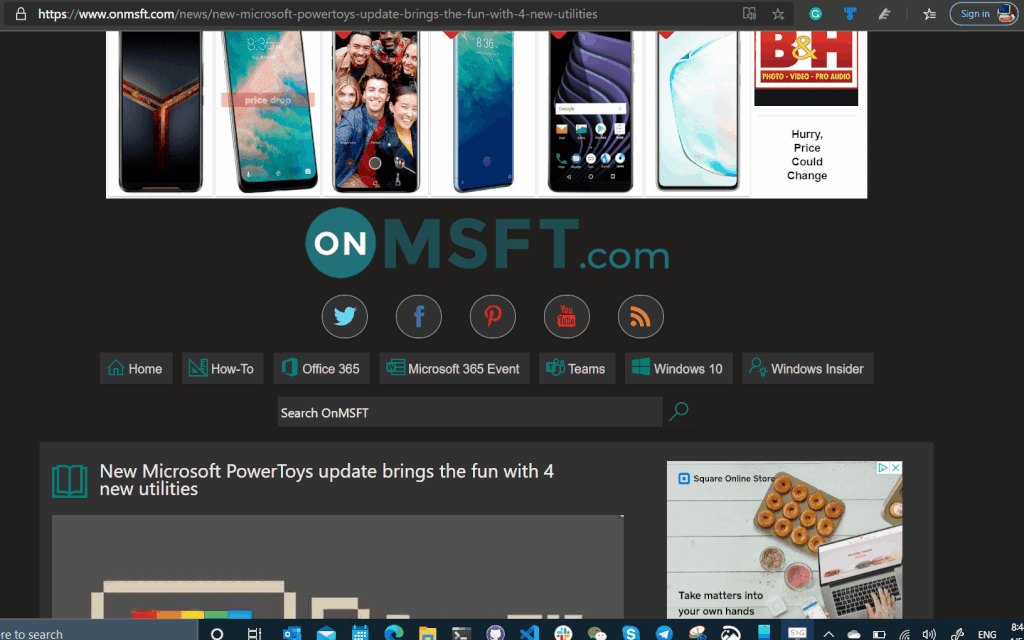Hands on with the new PowerToys – how to get the most out of your PC

Windows 10 PowerToys was the tool reboot that I didn’t know I needed for Windows 10. Since the release of PowerToys v.0.16 early last week, I have been waiting to sit down to spend some time with Microsoft’s newest open-source gem PowerToys. For anyone who doesn’t remember, PowerToys was originally conceived during the bygone era of Windows 95 and was created to give users some powerful tools to simplify certain tasks or allow for greater customization to a Windows workspace.
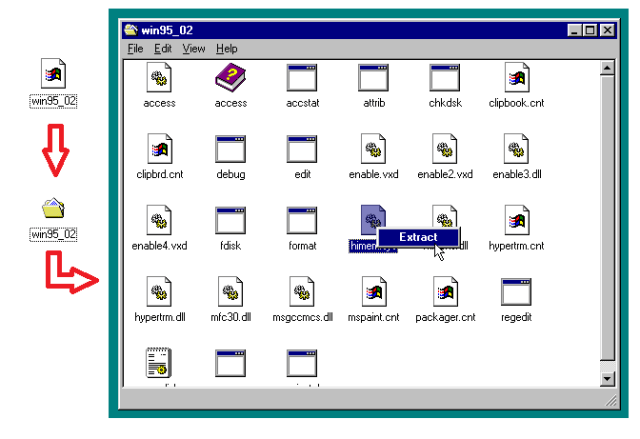
A look at PowerToys in previous versions of Windows.
The team behind the PowerToys project defines a PowerToy as a utility that helps a user do a task faster, flexibly, and easy enough for any user to add it to their existing workflow. For this open source project, Microsoft has defined success for PowerToys with the following – continued user growth, bug-free and stable and most importantly enjoyable.
Just quick summary to get all of us caught up. Microsoft previously released FancyZones and Short Guide utilities, and during the week added 4 new utilities with the release of v0.16 for Windows 10.
- Image Resizer
- Power Rename
- File Explorer preview panes for Markdown (.md) and SVG Files
- Window Walker
Let’s dive in and look at what these tools can do, and we see for ourselves if Microsoft’s goal of making things easier is fact or faction.
Setting Up PowerToys
With v.0.16, Microsoft gives you a couple of relatively easy options to set up PowerToys on your device. The easiest, and best option for most people, is to simply visit the PowerToys GitHub releases page and install PowerToys using the Windows installer. If you check out the screenshot below, you can see the familiar setup is just like setting up any other Windows app. Just follow the prompts and you will be ready to go.
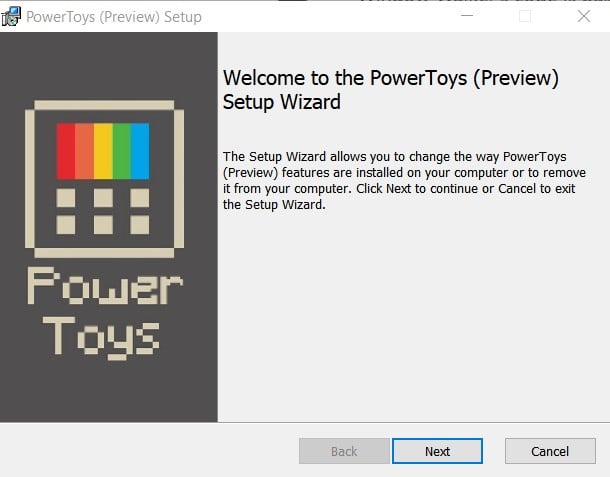
Install PowerToys in Windows 10 with Windows installer
For anyone feeling a bit more adventurous, you can set up PowerToys using PowerShell (be sure to run it as an administrator). Note, To get the most out of PowerShell, I recommend that you first install Windows Package Manager Chocolatey if you haven’t already. Chocolatey is like Brew on a Mac if you are more familiar with using Mac Terminal instead of PowerShell.
Now, open PowerShell and run the following command > choco install powertoys following the example below.
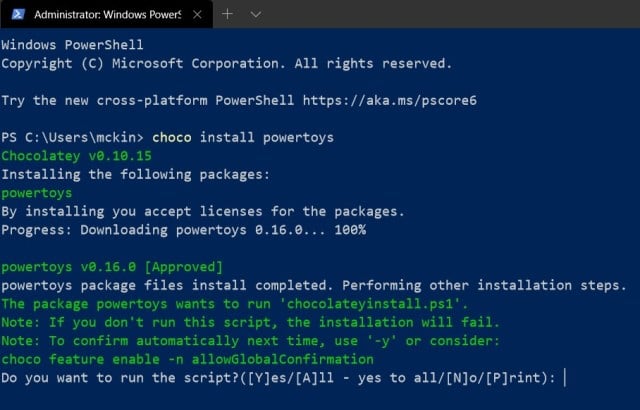
Just follow the steps and you will be up and running in just a few minutes. To confirm, you should see PowerToys running and can right-click on the icon to view the settings for each utility.

Now, with PowerToys setup on your device, we are now ready to try the new utilities and see firsthand how PowerToys can improve the Windows experience by eliminating time-consuming tasks, or allowing you to transform the Windows experience into something that is more “you.” In my case, having used the TinyPNG service to resize more files than I can count, Image Resizer has already become a top tool in my writing toolset.
Image Resize
Image Resizer is for anyone who ever needs to quickly resize images with preset options for small, medium, large, phone size, as well as custom sizing including Fill, Fit and Stretch. For example, if you need to attach multiple images to an email where there are size constraints, or if you need to build a set of images that need to use a specific size, Image Resizer gets the job done.
To start, open File Explorer and select the images you want to resize, “right-click” to open your menu and select the “Resize Pictures.”
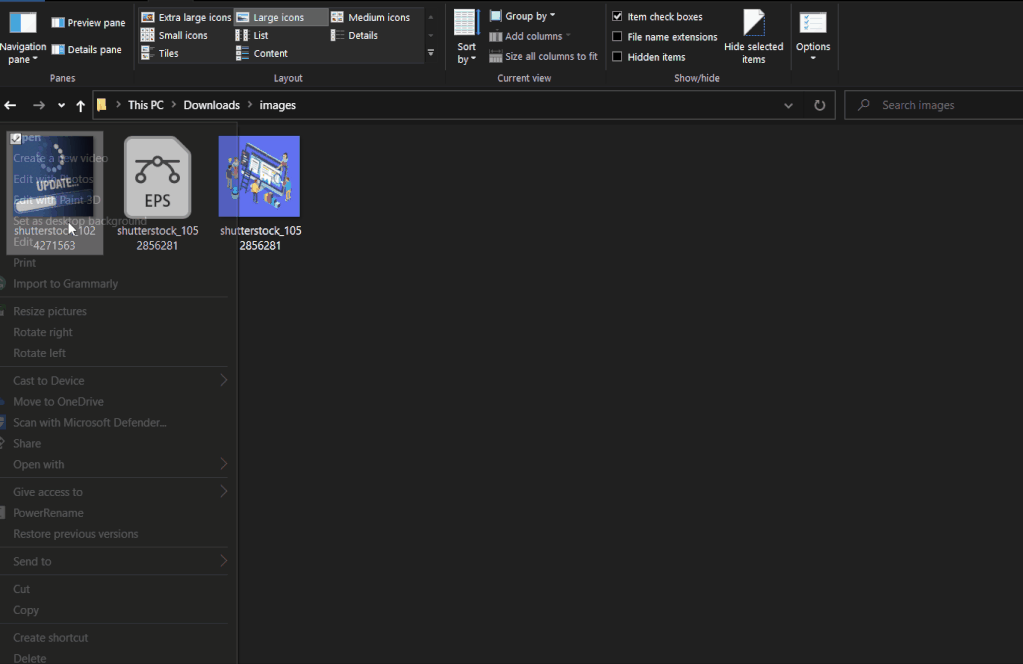
From there, you will receive a dialogue box with a range of options. By default, Image Resizer will create new copies of your images, but you can also resize and replace your existing images as well.
Preview Panes
Preview Panes gives you a read-only preview of a file’s contents. Select the “View” tab on the ribbon and enable the “Preview Pane” option, or enable it by simply pressing “Alt+P.” Currently, preview pane lets you see any documents that are in markdown, or Scalable Vector Graphics (SVG). For a developer, this is something that you would see in Microsoft’s VS Code Editor using an installed markdown preview extension. Clearly, Microsoft is learning and adopting popular features from their developer tools and are now making those same capabilities available to regular Windows 10 users.
If you look at the example below, you select the “preview pane” option on the ribbon and then select the markdown file that we want to view. As someone who builds web pages frequently in markdown, this is definitely a time saver as I frequently want to view my content or images before submitting it to production and this feature allows me to do the same action I normally do but with fewer steps.
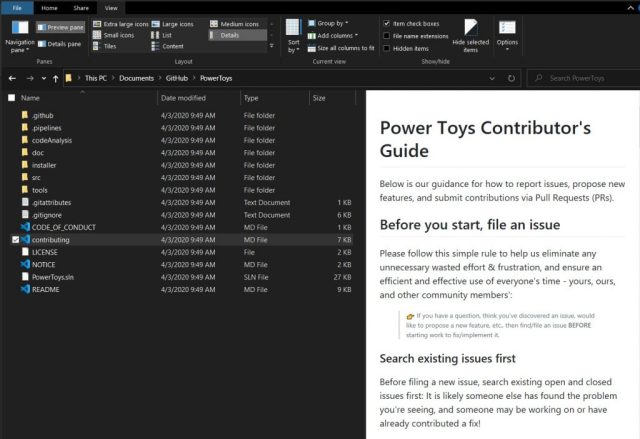
Window Walker
Window Walker is your text-based Alt+Tab alternative with a search feature. To try it, press Ctrl+Win. You’ll see a text box appear. Start typing a phrase to search for open windows that match it. For example, if you have multiple Microsoft Edge browser tabs, you can type “Edge” and you’ll see a list of tabs and then use the arrow keys to scroll through them and pressing “Enter” when you have the one you want.
PowerToys text-based search utility to navigate open windows and application in Windows 10.
For me, this tool is very helpful as working and searching text is a very normal workflow. Using this search function makes it very easy when I have a lot of tabs open and I want to find a specific page with an article or feature that I want to refer to. In this case, you can enter Ctrl+Tab and then type in the name of the website that you are looking for.
Power Rename
Power Rename is exactly like it sounds, an easy to use renaming utility that lets you search and replace at scale. You simply right-click the files you want to rename and then select “Power Rename.” You’ll see a dialogue window pop up that gives you some text boxes and checkboxes and the integrated preview pane can help you fine-tune the available renaming settings before you complete your action click on “rename.”
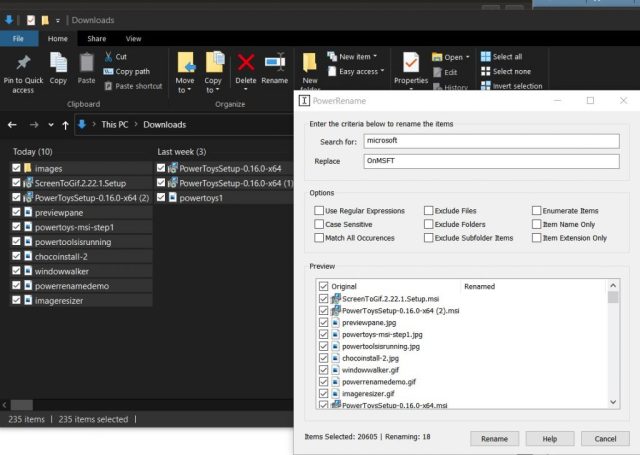
Power Rename isn’t just for file names. You can also rename entire folders, subfolders, and the files they contain in one shot. Right-click a folder with files and subfolders. Click on Power Rename from the popup menu and in the Search For field, type the name you wish to find, such as Microsoft. In the Replace With field, type the replacement text, such as OnMSFT.
Coming Soon
Based on the current development roadmap Microsoft has several updates coming that will impact the availability and usability of PowerToys. First, Microsoft is working on an “auto-update” option for PowerToys and expects that new features will be added with v.0.17, as well as a formal release of PowerToys into the Windows store in September of this year when it will officially launch as a 1.0 product.
Some other potential utilities already on the roadmap include a new virtual desktop, animated GIF recorder (I wish I had that for this article) and find my curser. Based on my own experiences so far I would say Microsoft is on the right track. While polish, usability, and functionality will be improved over time some of these tools in their current iterations are already improvements over many existing tools in the Windows ecosystem. I for one am looking forward to what is next. Once you have had the chance to try it yourself tell us what you think. Is PowerToys something that you interested in?

